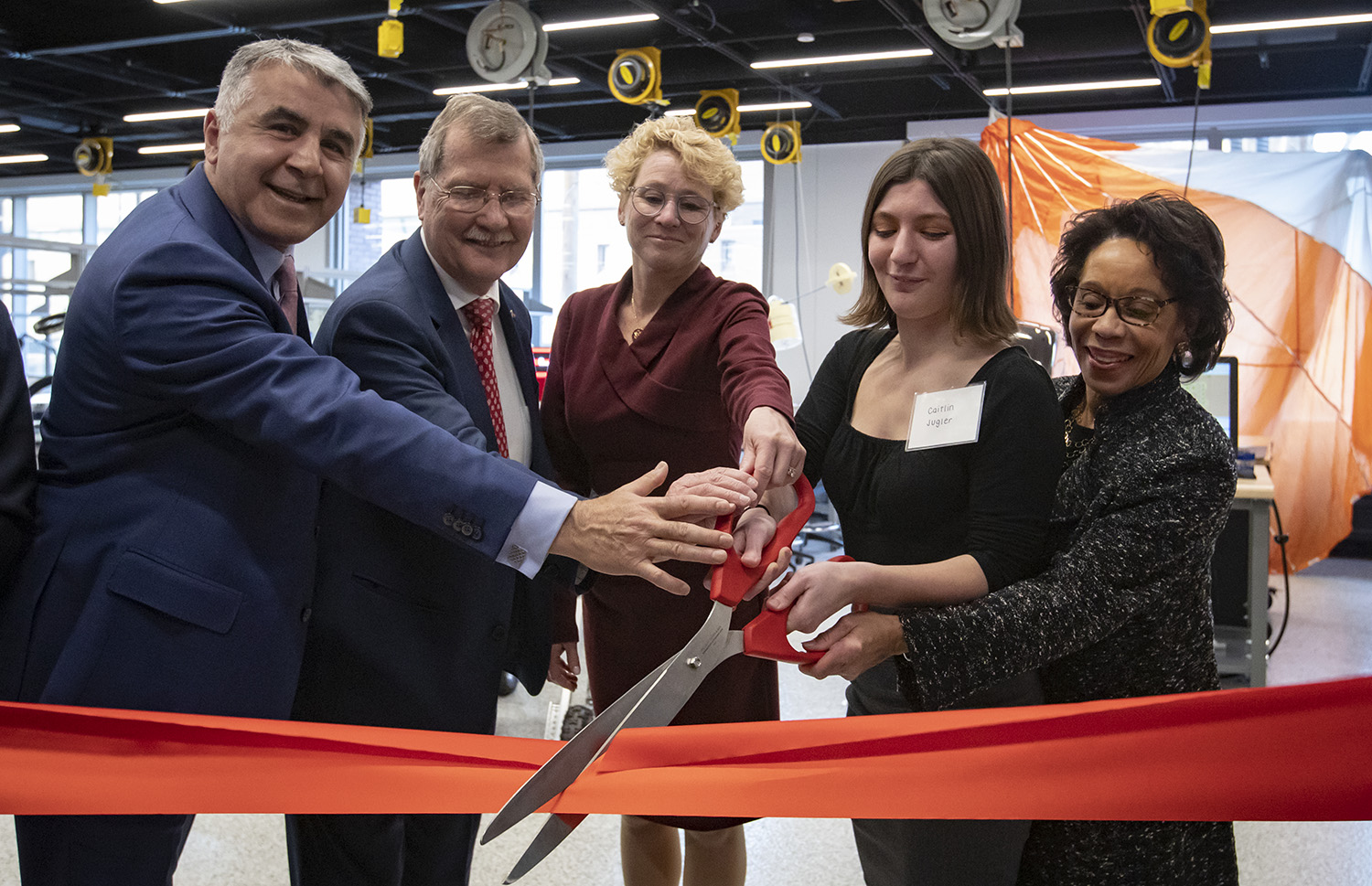To mark the close of Engineers Week, university officials joined students, faculty and alumni last week to celebrate the opening of the IDEAS Hub at Temple College of Engineering. Caitlin Jugler, president of the Temple Society of Women Engineers, was joined by Temple President Richard Englert, Provost JoAnne Epps, Dean Keya Sadeghipour, and special guest Rep. Chrissy Houlahan at the ribbon cutting ceremony to unveil the space.
Standing for Innovation, Design, Engineering and Applied Science, the IDEAS Hub is part of a wave of facility upgrades at the college. The $4.5 million, 8,000-square-foot space is outfitted with leading-edge tools including robotics and drone stations, additive manufacturing and more.
"The IDEAS Hub is among the most collaborative, creative engineering spaces in our building,” said Dean Sadeghipour. “The Hub will not only empower students and faculty with the tools to learn about the world around them, but to change it, too."
Rep. Houlahan spoke to students about her education as an industrial engineer and experience as co-chair of the U.S. House Women in STEM Caucus. Afterwards, attendees viewed demonstrations of the equipment at an open house, including an industrial robotic cell, courtesy of Demco Automation.
“We are proud to collaborate with the Temple University College of Engineering in support of their new IDEAS Hub through the donation of an Industrial Robot Cell. The system is designed to be a modular tool fostering learning, research and industry partnerships,” said Stephen Maund (ENG, 99), President & CEO of Demco Automation. “The Robot Cell contains key components used by global companies today, while having the flexibility to upgrade technology and meet educational needs well into the future.”
Senior Associate Dean David Brookstein shared that the IDEAS Hub will be a key component for students of all disciplines, including non-engineers, to work together.
“This space puts into practice the idea of identifying need and working collaboratively across majors,” Dr. Brookstein said. “Not just with engineers, but artists, scientists, business majors and more, to identify and solve problems.”

